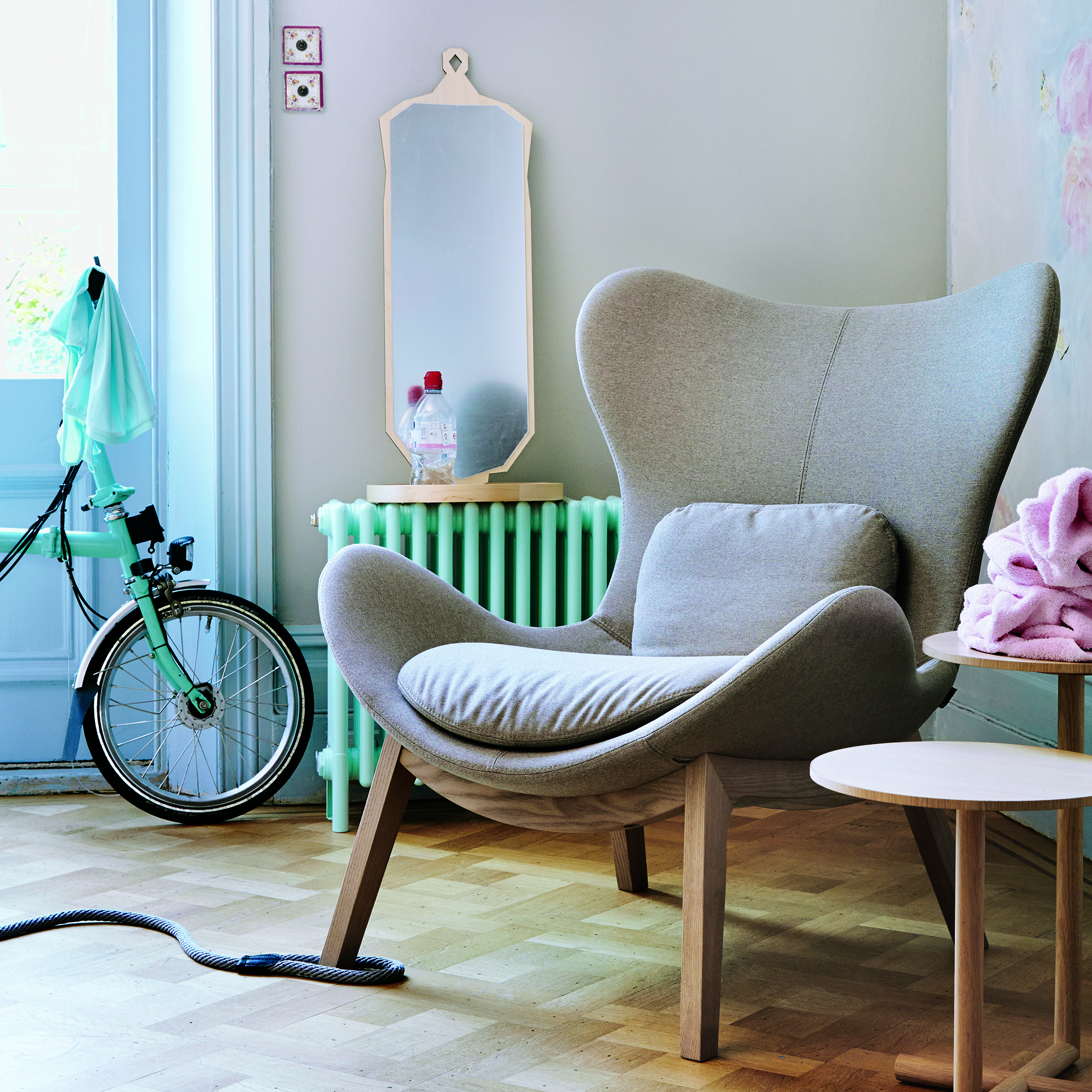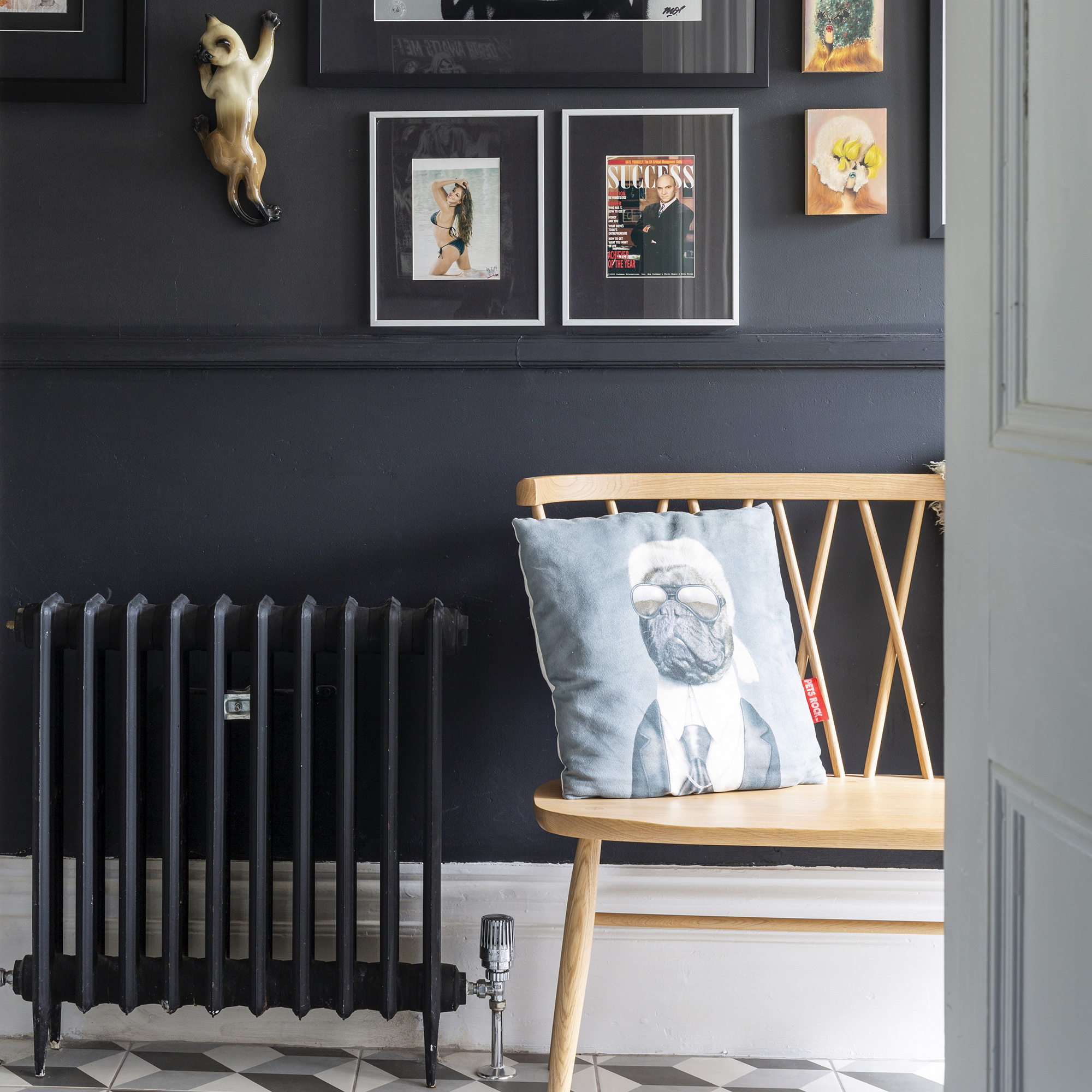
Radiators are an essential component of a home (especially in the UK winters) but they can often disrupt a design scheme, which might lead you to wanting to paint it for a refresh. If you're looking to match it to the colour of your walls, you'll likely be wondering whether you can paint a radiator with emulsion, too.
With radiators heating up and cooling down, you need to be more careful with the paint choice so that it doesn't chip and flake off. Knowing how to paint a radiator is simple and easy DIY to achieve with a little guidance, so all that's left to do is choose the right paint that will give you perfect results.

Can you paint a radiator with emulsion?
Emulsion is a water-based paint with vinyl or acrylic resins added to make it more hard-wearing. This makes it a great choice for an area such as a radiator where you want it to last. A radiator is also the prime spot for embracing the latest paint trends too, and emulsion gives you access to a wide range of palettes.
Sophie Smith, founder of Zhoosh Paints reinforces this: 'Yes, you can paint your radiator with a good quality emulsion. It’s a really nice way to give a room a refresh without paying for new radiators, which can be costly!'
'We have seen a rise in homeowners painting their radiators the same colour as their walls - known as colour drenching. Our eggshell paint is suitable for use on radiators. The key to getting it right is to make sure your radiator is thoroughly dusted, cleaned and dried - and turned off! - before starting,' Sophie adds.
Application is everything when it comes to painting your radiator - you want to pay careful attention to not getting it on the carpets, walls or skirting boards.
'Getting in between the pipes can be tricky so use a thin, high-quality synthetic brush and ensure you fully prep the area with a good quality masking tape to avoid paint bleeds and smudges onto your wall,' continues Sophie. 'We recommend two coats and for added sealing you can apply a clear radiator overcoat after the emulsion. No heat for 24 hours after application.'

How do you paint a radiator with emulsion?
As we mentioned above, learning how to paint a radiator properly will save you time and expenses down the line. It's also a great way of updating your interior design with a statement colour or to blend it into the rest of the room.
'Painting a radiator is a great way to protect and give it a facelift,' says Jimmy Englezos, product expert at Ronseal. 'With the right tools, this is a fairly simple job which can turn a piece of hardware into a statement piece in the home.'
'To simplify the job, I’d recommend using a specially formulated radiator paint, which can withstand the temperatures of your radiator. The Ronseal One Coat Radiator Paint is perfect for applying to enamel and will add a layer of protection to the surface without peeling under the heat – this can also be used on any kind of radiator, including cast iron options.'
FAQ
Can you paint a radiator with gloss paint?
Yes, you can use gloss paint on radiators - you'll just need to take the same precautions as you would with any other paint. Gloss paint is easy to maintain, so it's a great choice if you want a low-maintenance option that doesn't need regularly painting over when chips occur.
It can, however, be more difficult to apply gloss paint so consider hiring a professional if you're not confident in your abilities. It also often takes a bit longer to dry, which might make it a longer job to tick off.
What colour are you choosing first?







